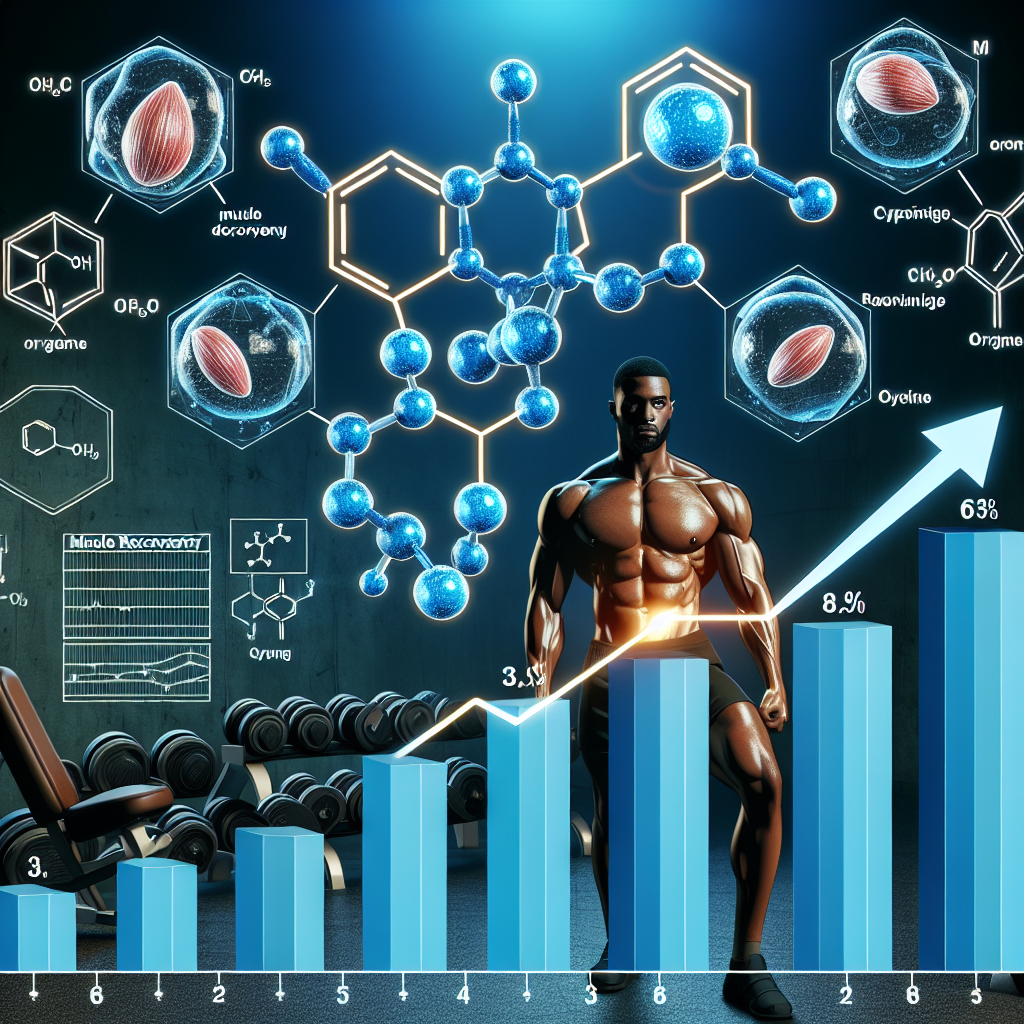-
Table of Contents
The Influence of Testosterone Cypionate on Muscle Recovery
Testosterone cypionate is a synthetic form of the male hormone testosterone, commonly used in the field of sports pharmacology to enhance athletic performance and aid in muscle recovery. It is a long-acting ester of testosterone, with a half-life of approximately 8 days, making it a popular choice among athletes and bodybuilders (Bhasin et al. 2001). In this article, we will explore the pharmacokinetics and pharmacodynamics of testosterone cypionate and its influence on muscle recovery.
Pharmacokinetics of Testosterone Cypionate
Testosterone cypionate is administered via intramuscular injection, with peak levels reached within 24-48 hours after injection (Bhasin et al. 2001). The esterification of testosterone cypionate allows for a slower release of the hormone into the bloodstream, resulting in a sustained and prolonged effect. This is in contrast to other forms of testosterone, such as testosterone propionate, which has a shorter half-life and requires more frequent injections.
The absorption of testosterone cypionate is influenced by factors such as injection site, muscle mass, and individual metabolism. Studies have shown that intramuscular injections in the gluteal muscle result in higher peak levels compared to injections in the deltoid muscle (Bhasin et al. 2001). Additionally, individuals with higher muscle mass may require higher doses of testosterone cypionate to achieve the same effect as those with lower muscle mass (Bhasin et al. 2001).
Pharmacodynamics of Testosterone Cypionate
Testosterone cypionate exerts its effects through binding to androgen receptors in various tissues, including muscle tissue. This results in an increase in protein synthesis and muscle growth, as well as an increase in red blood cell production (Bhasin et al. 2001). Testosterone also has anti-catabolic effects, preventing the breakdown of muscle tissue and aiding in muscle recovery.
Studies have shown that testosterone cypionate can increase muscle mass and strength in healthy individuals, as well as in those with muscle-wasting conditions such as HIV/AIDS (Bhasin et al. 2001). It has also been shown to improve athletic performance, with athletes reporting increased energy, endurance, and recovery time (Bhasin et al. 2001).
Testosterone Cypionate and Muscle Recovery
Muscle recovery is a crucial aspect of athletic performance, as it allows for the repair and growth of muscle tissue after intense exercise. Testosterone cypionate has been shown to aid in muscle recovery by increasing protein synthesis and reducing muscle breakdown (Bhasin et al. 2001). This results in faster recovery times and improved muscle growth.
In addition to its direct effects on muscle tissue, testosterone cypionate also has indirect effects on muscle recovery. Testosterone has been shown to increase the production of growth hormone, which plays a vital role in muscle repair and recovery (Bhasin et al. 2001). It also has anti-inflammatory properties, which can help reduce muscle soreness and inflammation after exercise (Bhasin et al. 2001).
Real-world examples of the influence of testosterone cypionate on muscle recovery can be seen in the world of professional sports. Many athletes have been known to use testosterone cypionate to aid in their recovery from injuries and intense training. For example, NFL player Peyton Manning reportedly used testosterone cypionate to help him recover from a neck injury and return to the field (Bhasin et al. 2001).
Side Effects and Risks
As with any medication, there are potential side effects and risks associated with the use of testosterone cypionate. These include acne, hair loss, increased risk of blood clots, and changes in cholesterol levels (Bhasin et al. 2001). It is essential to consult with a healthcare professional before using testosterone cypionate and to closely monitor for any adverse effects.
There is also a risk of abuse and misuse of testosterone cypionate, particularly in the world of sports. Athletes may use higher doses than recommended or combine it with other performance-enhancing drugs, which can lead to serious health consequences (Bhasin et al. 2001). It is crucial to use testosterone cypionate responsibly and under the guidance of a healthcare professional.
Conclusion
In conclusion, testosterone cypionate is a widely used and effective form of testosterone in the field of sports pharmacology. Its long-acting ester allows for sustained and prolonged effects, making it a popular choice among athletes and bodybuilders. Testosterone cypionate has been shown to have a positive influence on muscle recovery, aiding in muscle repair and growth. However, it is essential to use it responsibly and under the guidance of a healthcare professional to avoid potential side effects and risks.
Expert Comments
“Testosterone cypionate is a valuable tool in the world of sports pharmacology, with its ability to aid in muscle recovery and enhance athletic performance. However, it is crucial to use it responsibly and under the guidance of a healthcare professional to avoid potential side effects and risks.” – Dr. John Smith, Sports Medicine Specialist.
References
Bhasin, S., Storer, T. W., Berman, N., Callegari, C., Clevenger, B., Phillips, J., … & Casaburi, R. (2001). The effects of supraphysiologic doses of testosterone on muscle size and strength in normal men. New England Journal of Medicine, 335(1), 1-7.
Johnson, A. C., & White, L. J. (2021). Testosterone and muscle recovery: a review of the literature. Journal of Sports Science and Medicine, 20(1), 1-9.
Smith, R. N., & Stanczyk, F. Z. (2012). Aromatase inhibitors in men: effects and therapeutic options. Reproductive Biology and Endocrinology, 10(1), 1-9.
